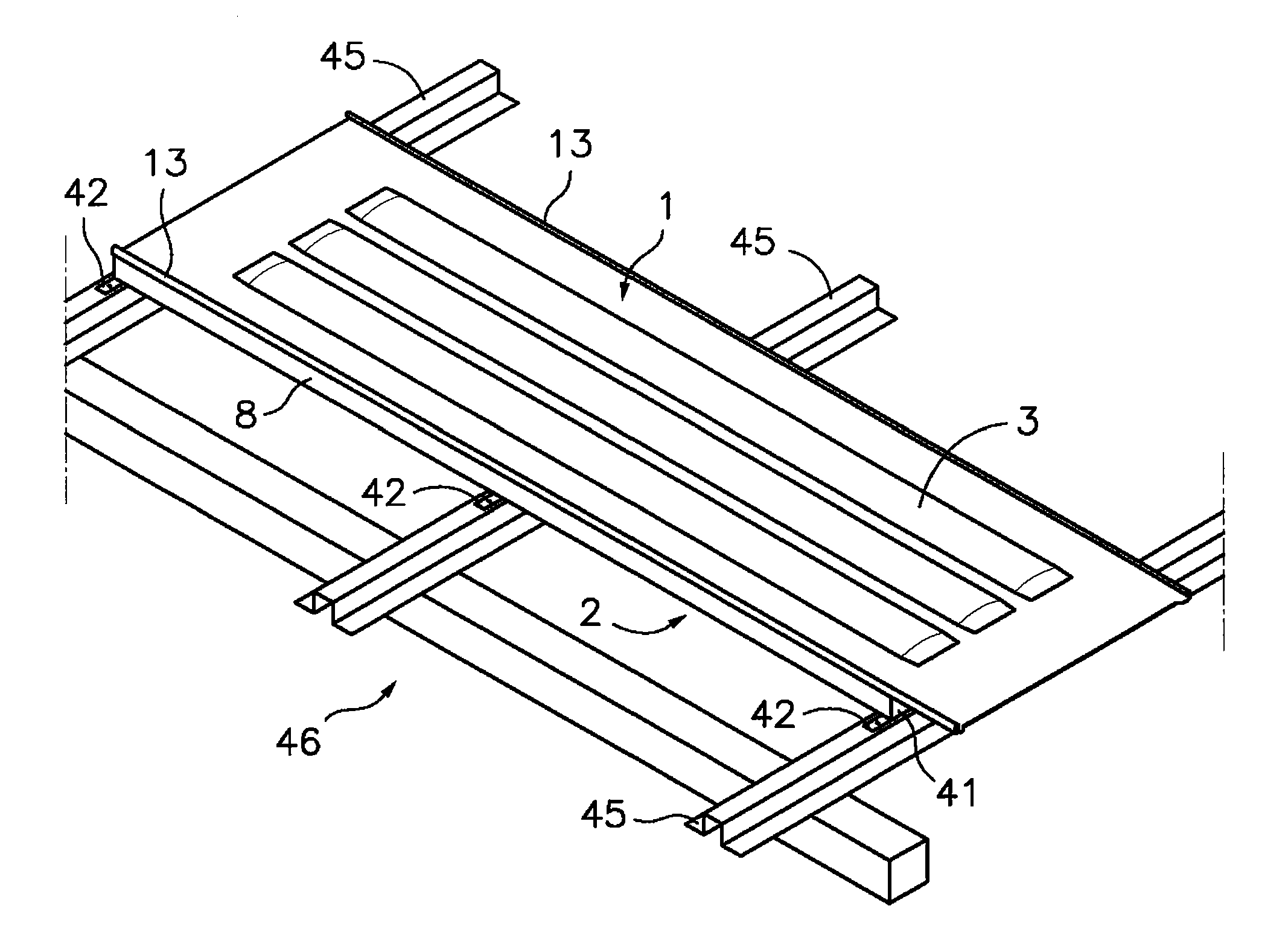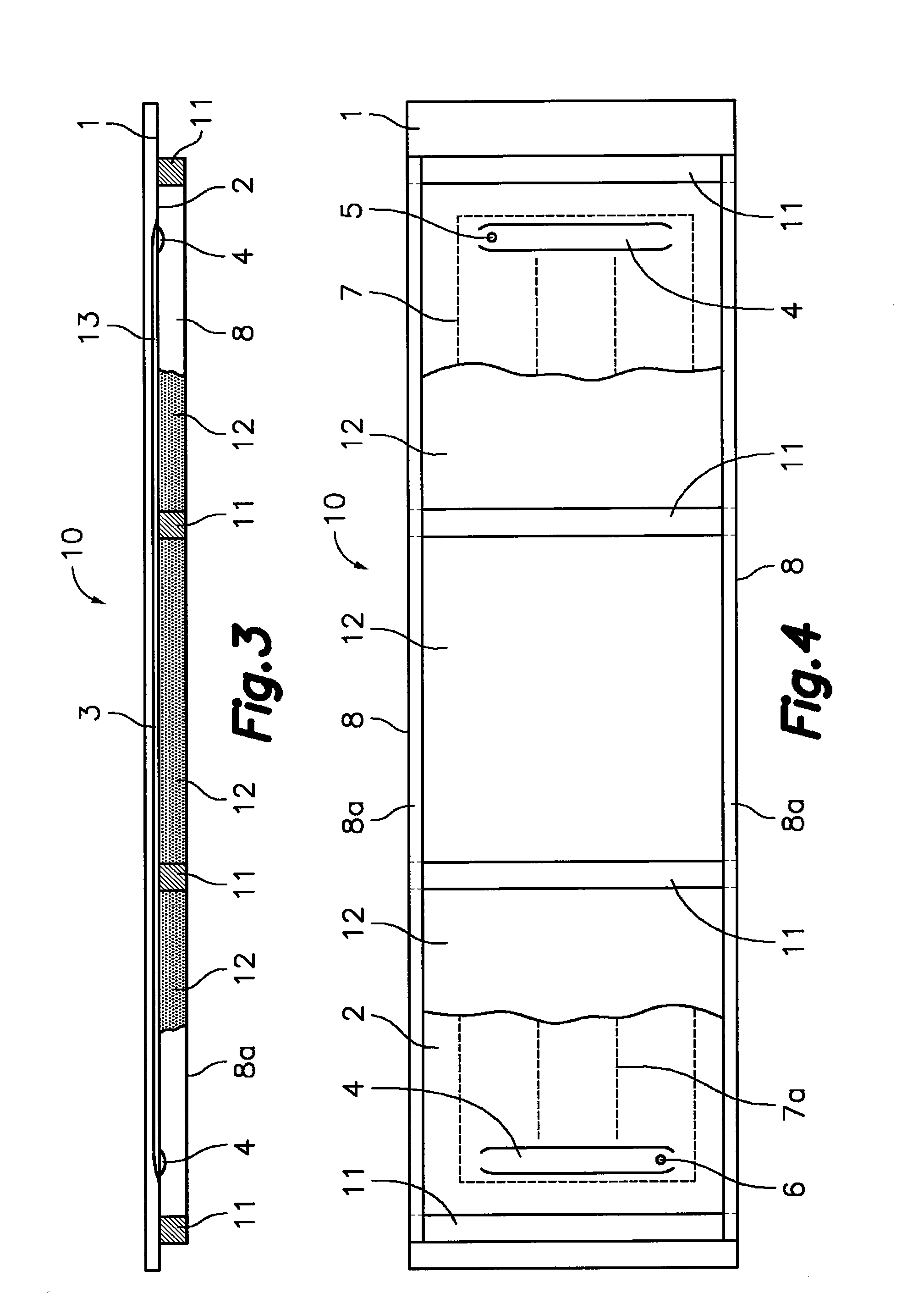Solar energy-collecting architectural enclosure panel and walkable solar energy-collecting roof
- Summary
- Abstract
- Description
- Claims
- Application Information
AI Technical Summary
Benefits of technology
Problems solved by technology
Method used
Image
Examples
Embodiment Construction
[0041]With reference first to FIGS. 1 to 4, the solar energy-collecting architectural enclosure panel according to the first aspect of the present invention is formed from an outer plate 1 and an inner plate 2 which are mutually facing and joined by a leak-tight joint line along a closed perimeter 7, which is separated at a predetermined distance from perimetric edges of said outer and inner plates 1, 2. The outer plate 1 has outwardly projecting hollow conformations 3 (FIGS. 1, 2 and 3) with a longitudinal configuration and the inner plate 2 has inwardly projecting hollow conformations 4 (FIGS. 3 and 4) with a transverse configuration. The mentioned hollow conformations 4 of the inner plate 2 are facing one another at the ends of the hollow conformations 3 of the outer plate 1 such that between both they form a circuit for a heat-carrying fluid within said closed perimeter 7. The mentioned circuit has an inlet 5 and an outlet 6, for example, in the hollow conformations 4 of the inn...
PUM
 Login to View More
Login to View More Abstract
Description
Claims
Application Information
 Login to View More
Login to View More - R&D
- Intellectual Property
- Life Sciences
- Materials
- Tech Scout
- Unparalleled Data Quality
- Higher Quality Content
- 60% Fewer Hallucinations
Browse by: Latest US Patents, China's latest patents, Technical Efficacy Thesaurus, Application Domain, Technology Topic, Popular Technical Reports.
© 2025 PatSnap. All rights reserved.Legal|Privacy policy|Modern Slavery Act Transparency Statement|Sitemap|About US| Contact US: help@patsnap.com



